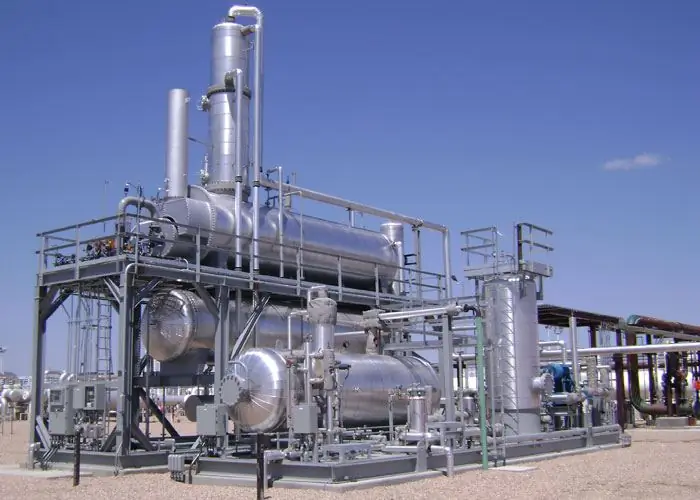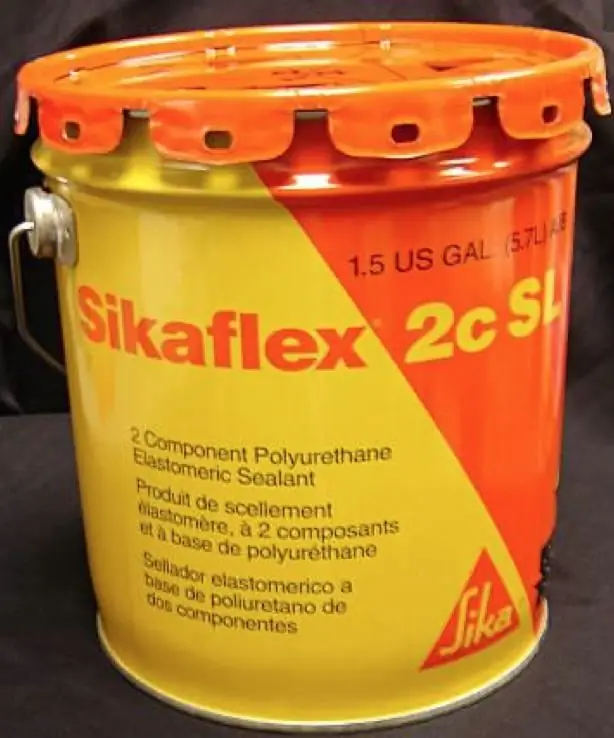2026 Author: Howard Calhoun | [email protected]. Last modified: 2025-01-24 13:10:33
Depleted is called uranium, consisting primarily of the isotope U-238. It was first made in 1940 in the USA. This material is a by-product of the enrichment of natural uranium in the manufacture of nuclear fuel and ammunition.
How it is made
How to make depleted uranium? For specialized companies, this is not a problem. Nuclear reactors and facilities use natural U-235. Such uranium is enriched by separating isotopes by mass. In this case, the main part of U-235 and U-234 is extracted from the material. As a result, DU remains, the radioactivity of which is not too high. According to this indicator, it is inferior even to uranium ore, which Soviet geologists once carried in their backpacks.

Depleted uranium application
Use the DU can be both for peaceful purposes and for the production of ammunition. He deserved his popularity primarily because of the high density (19.1 g/cm3). Very often it is used, for example, as a counterweight in rockets and aircraft. Another area in which this material has found wide application isthe medicine. In this case, the DU is mainly used for the production of radiation therapy devices. This material is also used as radiation protection, for example, in equipment radiography.
In the military industry, uranium is most often used to make armor plates. It is also used in the manufacture of ammunition and even nuclear warheads. In this capacity, it was first used by the US military. US engineers guessed to replace expensive tungsten with this metal in the manufacture of BPS cores. The fact is that in terms of density, depleted uranium is very close to the latter. At the same time, cores made from it cost three times cheaper than tungsten ones.

Features of the use of ammunition with depleted uranium
One of the advantages of DU as the core of ammunition is that it is capable of self-igniting on impact. In this case, small fragments ignite in the air and ignite combustible materials inside armored vehicles or cause an explosion of ammunition.
In addition, depleted uranium ammunition tends to self-sharpen. Therefore, in the extreme conditions corresponding to the shot, such projectiles can spontaneously acquire a shape that allows them to pass through any obstacles with minimal energy loss.
Where such ammunition was used
Depleted uranium shells have been used by the US military in several wars. They were first used in Iraq in 1991. At that time, the US Army spent about 14 thousand tankprojectiles of this type. In general, the United States used about 300 tons of DU at the time.
In the early 21st century, NATO used depleted uranium projectiles in the war against Yugoslavia. Then it led to a major international scandal. The public has learned that many service members have developed cancer.
Claims for disease caused by weapons of this kind against the US Government have been filed by soldiers since Iraq. However, none of them was satisfied then. The Government referred to the fact that there is no direct evidence of the harmful effects of DU on the human body.

In January 2001, a special UN commission examined 11 objects that were hit by ammunition with such rods. At the same time, 8 of them were infected. Moreover, according to some experts, the water in Kosovo was completely unfit for consumption. Decontamination of the surveyed area could cost several billion dollars.
In Iraq, such studies, unfortunately, were not carried out. But information about the citizens of this country who fell ill after the shelling is also available. For example, before the start of the conflict in the city of Basra, only 34 people died of cancer, after it - 644.

Armor Plates
For the manufacture of tank armor, DU can also be used, and all thanks to its high density. Most often, an intermediate layer is made from it between two steel sheets. Depleted uranium armor is used, for example, on the M1A2 and M1A1HA Abrams tanks. The latter were upgraded after 1998. This technique contains depleted uranium liners at the front of the hull and turret.
Characteristics. Possible effects on the human body
Despite the fact that in terms of radioactivity, depleted uranium is still considered not too dangerous (because, among other things, it has a long half-life), apparently, it still has a harmful effect on the human body maybe. UN research speaks volumes about this.
Why the number of oncological patients increases after shelling with such shells, Russian scientist Yablokov managed to find out. It was initially clear to this researcher that it was most likely not a matter of radiation. In the end, he managed to find out that depleted uranium shells are capable of leaving behind a so-called ceramic aerosol. Getting into the lungs of a person, it is this substance that penetrates into other tissues and organs, gradually begins to accumulate in the liver and kidneys, which leads to the development of oncological diseases.

In mid-January 2001, after the studies carried out in Kosovo, the UN Secretariat sent warnings to all missions about the dangers of depleted uranium for the human body. However, the Pentagon still continues to insist on the safety of the mentioned substance, referring to the data of the World He alth Organization. And, of course, continues to use weapons on hisbasis.
How radiation can occur
Uranium is always present in the environment. Even in the human body there is a certain amount of it (about 90 micrograms). In contact with ammunition containing DU, despite their relative safety in this regard, a person can still receive a small amount of exposure. This usually happens in the following cases:
- With direct contact or proximity to the OS. Exposure can, for example, occur while working in an ammunition depot, while being in the same car with them, in contact with debris from an explosion, etc. The depleted uranium core is located in the case. However, sometimes the integrity of the latter can be violated. In this case, the risk of exposure increases significantly.
- When ingested by ingestion or inhalation of DU particles.
- Directly through the blood. This usually happens when injured as a result of contact with projectiles or armor made from DU.
Now the WHO has developed guidelines for uranium. Most of them can be applied to OS as well. Thus, the allowable daily dose of uranium in the mouth is considered to be 0.6 μg per kilogram of human weight. Limits of ionizing radiation are 1 m3v per year for ordinary citizens and 20 m3v per five years for persons working in a radiation environment (on average).

Disposal issue
Currently, huge stocks of DU have been accumulated in the world. AtThis industrial technology for its complete utilization has not been developed so far. European companies in such conditions prefer to act according to a very simple scheme. Formally, they simply send the DU to Russia for processing. Meanwhile, such an operation is considered even more expensive than the cost of disposing of this substance and its storage. The benefit for companies in this case is that after additional enrichment, only 10% of the raw materials imported to Russia are returned to Europe. 90% remains on the territory of our country.
According to the law, it is impossible to store DU from other countries in Russia. In order to circumvent it, foreign depleted uranium is simply transferred to federal ownership. At the moment, about 800 thousand tons of such waste have been accumulated in Russia. At the same time, 125 thousand tons were brought from Europe.

In the US, DU is treated as radioactive waste. In Russia, depleted uranium is defined as a valuable energy raw material, excellent for fast neuron reactors.
Recommended:
Latex glue: description, composition, characteristics, application

Today, many different compounds are used in order to glue different surfaces, materials, etc. One of the fairly common compounds is latex glue. The main advantage is that, depending on the changes in the composition, the scope also changes
Uranium ore. How is uranium ore mined? Uranium ore in Russia

When the radioactive elements of the periodic table were discovered, a person eventually came up with an application for them. This is what happened with uranium
Gaseous fuel: description, characteristics, production methods, application

Gas fuel has been known since the middle of the 19th century. It was then that the famous engineer Lenoir built his first gas internal combustion engine. This apparatus was primitive and worked without pre-compression of the combustion chamber. Modern engines are no match for it. Today, the use of gaseous fuels is not limited to cars. This environmentally friendly, cheap and affordable type of fuel is actively conquering more and more new niches
Gas drying: definition, characteristics, methods and types of work, application of installation and special equipment

Gas drying is one of the cleaning methods that helps to get rid of moisture inside the pipeline. Its appearance is quite dangerous, as it causes corrosion of the metal. In addition, since mining is also carried out in conditions of low temperatures, ice formation is possible
Two-component polyurethane sealant: definition, creation, types and types, characteristics, properties and nuances of application

With long-term and high-quality sealing of seams and cracks, polyurethane two-component sealants have found their wide distribution. They have high deformation and elastic properties, therefore, they can be used as butt sealants in the field of repair and housing construction

